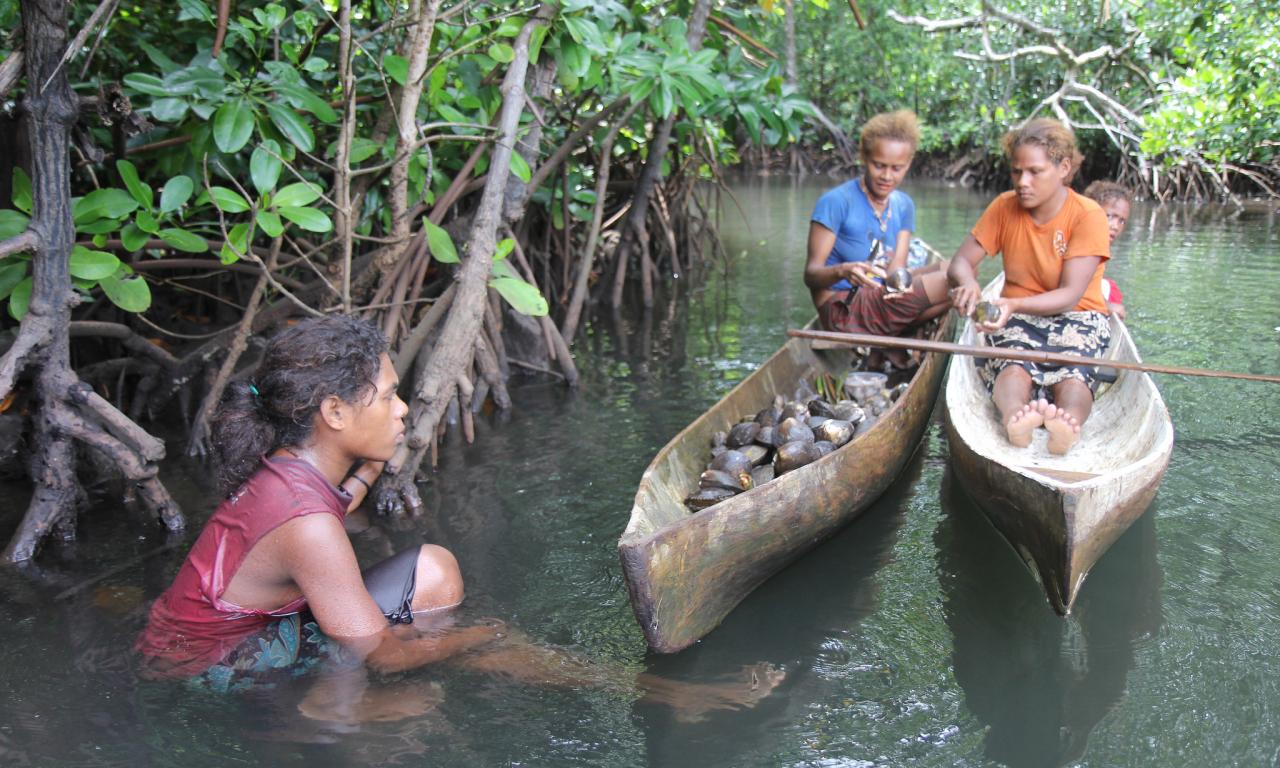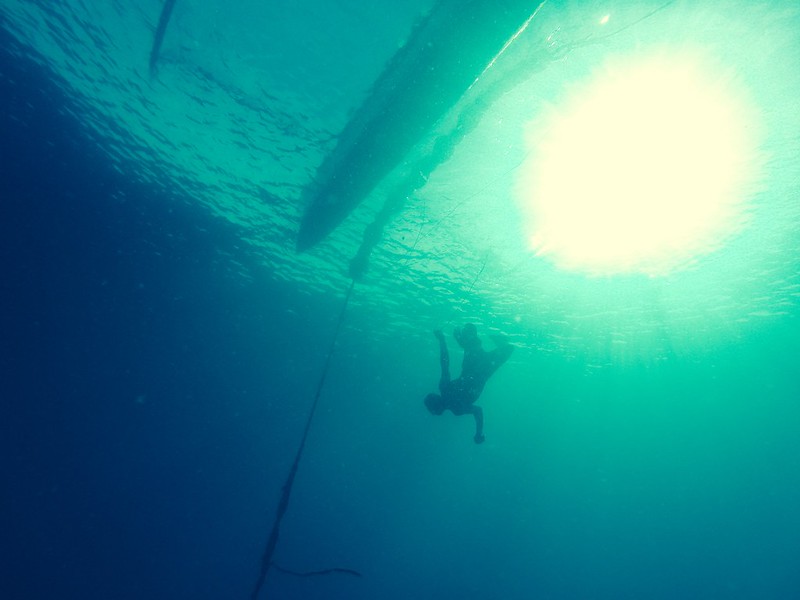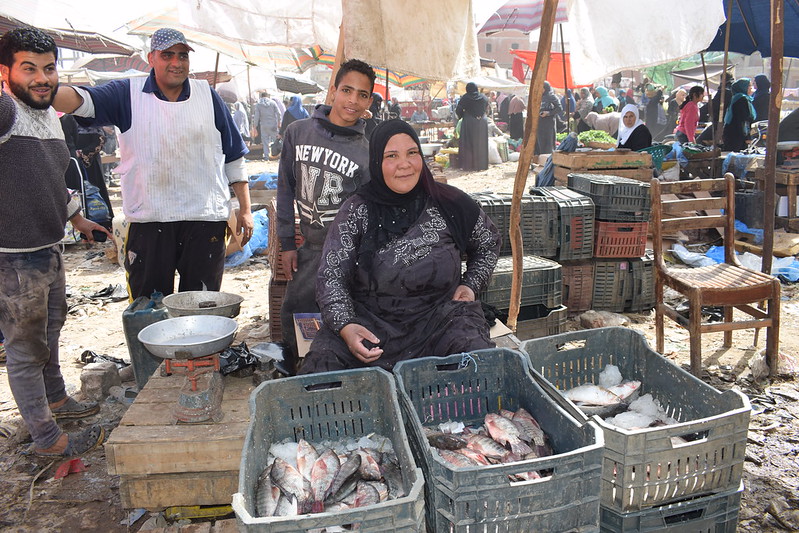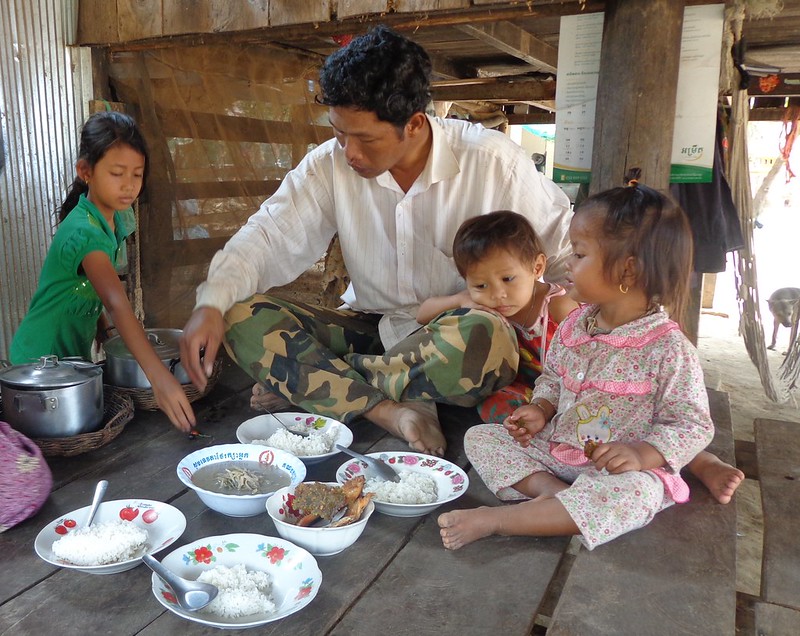
On International Women’s Day, Dr. Cynthia McDougall, WorldFish Program Leader for Gender Research, reflects on the role of gender research in aquaculture and fisheries in shaping the course of sustainable development.
Recommended publications
- Postharvest fish losses and unequal gender relations: drivers of the social-ecological trap in the Barotse Floodplain fishery, Zambia
- Women’s empowerment in aquaculture: Two case studies from Indonesia
- Women’s empowerment in aquaculture: Two case studies from Bangladesh
The world began celebrating International Women’s Day in 1975 when the United Nations designated 8 March for this purpose. Since then, many things have improved but much remains to be done to achieve equal rights for both men and women. From grassroots activism to global action, we are entering an exciting period of history where the world expects gender equality, notes its absence and celebrates women’s empowerment. At WorldFish, we are particularly interested in the way our gender research in aquaculture and fisheries shapes the course of sustainable development.
Reflecting on the meaning of this day, Tana Lala-Pritchard, Director, Communications and Marketing, caught up with Dr. Cynthia McDougall, Program Leader for Gender Research, to talk about the role of gender research in this regard.
WorldFish works to generate scientific evidence and bring that to the attention of policymakers, civil society organizations, private investors and international media who inform discourse and important decisions on the pressing issues of our times that relate to the global sustainable development agenda. The blue economy discourse in this context is of particular interest. Can you tell us about WorldFish’s engagement in this space and why it is important for gender equality and women’s empowerment?
Research contributions to high-level policy fora aiming to make progress on the Sustainable Development Goals (SDGs) are critical. This is because these fora present agenda-setting opportunities to effectively embed social and gender inclusion within potent multistakeholder processes.
Recently, WorldFish has been engaging more and more in shaping and influencing the global policy discourse on the blue economy. I can give three examples of this and the varying kinds of processes. First, several WorldFish researchers are contributing to an Expert Group supporting the High-Level Panel (HLP) for a Sustainable Ocean Economy. This is a unique initiative of 13 serving heads of state led by Norway that aims to accelerate global action for ocean health and wealth and charts a new course for a sustainable, prosperous future. The Expert Group is working to produce 15 Blue Papers that will inform global discourse and policy on a range of issues from ocean productivity, governance and equity, technology, finance and innovation as well as the reinvention of the human relationship with the ocean.
As another example, in 2018, we contributed research insights regarding small-scale fisheries to Our Ocean conference in Bali, Indonesia. Since 2014, this multistakeholder platform has generated commitments totaling about USD 18 billion dollars and 12.4 million square kilometers of marine protected areas.Similarly, as panelists at the Sustainable Blue Economy Conference in Nairobi, Kenya, we were struck by the magnitude and momentum of the forum. About 18,000 people engaged in these discussions designed to inform blue economy investments, ranging from small-scale fishers to governments and regional associations such as the African Union, and from donor organizations to the private sector.
On the one hand, all this indicates the unprecedented momentum in the world today around the ‘blue’ pathways to the SDGs, or the collective focus on oceans, lakes, rivers and other water bodies as critical for economic development, food and nutrition security and environmental sustainability.
And yet, while this ‘blue’ momentum holds tremendous potential, it equally holds tremendous risk. Specifically, we know from experience that a focus on economic growth, or even on food security or conservation—without an effective and equal commitment to social and gender inclusion and equity—will fall short at best and at worst will create perverse outcomes, such as further marginalizing women, the poor or otherwise vulnerable groups.
As such, it is vital that as progress toward this ‘blue future’ is (co-)created that planning both effectively involves women, small-scale fishers and other potentially marginalized groups and is based on evidence about risks, challenges and reliable strategies for inclusion, equity, equality and women’s empowerment. Doing so will not only help to mitigate this risk, it will also create potent opportunities for movement toward SDG 5: Achieve gender equality and empower all women and girls.
In your view, what are the key barriers to a ‘blue’ future being inclusive and promoting equity, equality and women’s empowerment?
I would like to borrow from our colleagues Jemimah Njuki and Michele Leone at the International Development Research Center (IDRC) to answer this. Reflecting on insights from the Sustainable Blue Economy Conference in Nairobi, they framed barriers in terms of four types: structural; social and cultural; capacity (and assets); and decision-making.
A second set of barriers are social and cultural. For example, gender norms. These include social expectations and pressures about which type of jobs or sectors are appropriate for women versus men, about women’s mobility (freedom to move independently outside the homestead) and about household decision-making and domestic caregiving roles. These can both limit women from engaging—or benefiting—from certain areas or opportunities and can create additional time and labor burdens. As women’s empowerment is linked to other development outcomes, such as nutrition and economic growth, these have knock-on effects undermining well-being and the achievement of the SDGs.
Capacity—and I am including assets here along with skills—is a third area of barriers. For example, women’s ability to engage in and benefit from expanding markets is also limited by lack of access to and control over (the right kind of and sufficient) capital, technologies and information.
The fourth key set of barriers relate to decision-making at multiple scales from households to resource management to national. In relation to shaping the blue economy, it is critical to note that high-level processes that shape investments and policies tend to be most accessible to actors who are already more powerful, including public and private interests. Even when there is formal space for small-scale fishers, women and less powerful groups, there may still be imbalances in who shapes the outcomes or disagreement with the underlying narrative that frames what is talked about, which is the structural barrier above. These challenges are exacerbated when there is a lack of trustworthy data to use as the basis for multistakeholder dialogue.
So how can gender research help address these barriers in order to create a blue future that is both sustainable and more inclusive?
Gender research generates specific evidence and insights about gender and social inclusion, exclusion, equity, equality and empowerment in relation to policies, investments, development interventions and strategies. Broadly speaking, gender research is critical for enabling this kind of change in two ways. First, it provides feedback and strategies essential to the quality and continuous improvement of these current and future policy, investments or development initiatives. Second, it brings to the table science-based evidence regarding needs, aspirations, impacts on and trade-offs for diverse groups of people (including the less powerful and vulnerable groups).
In other words, it can help diverse actors shift from assumption or position-based interactions to more productive dialogue, can be (constructively) disruptive and thus contribute to innovative ‘third-way’ solutions.
Can you give us some examples of what you mean by gender research that can be constructively disruptive?
Yes, of course. Let me tell you about the work we have been doing along the four categories of barriers I mentioned earlier.
In terms of the structural barriers, there is a pressing need for rigorous evidence about the extent to which ‘blue investments’ do or will benefit various groups, including women. This is where gender research plays a key role. For example, recent WorldFish-FAO case studies in Indonesia and Bangladesh surfaced information that helps to calibrate assumptions regarding aquaculture sector growth being automatically empowering for women (this relates to the larger assumptions we talked about regarding economic growth being good for all people). These small studies indicate that women from lower economic groups are less able to access and benefit from these opportunities than others, and that overall, many of the entry points for (most) women are lower return work.
In terms of market development, investigations with partner BoP Innovation Center and the Technologies for African Agricultural Transformation project in Nigeria enabled potential value chain opportunities to be analyzed against emerging rural women entrepreneurs’ own aspirations and needs. Both of these kinds of research represent evidence that can challenge assumptions, thus helping to set up investments that are more responsive and gender inclusive.
In relation to social and cultural barriers, gender research has developed empirically tested strategies that development organizations and fisheries extension officers can apply to effect more substantial and lasting gender outcomes. For example, together with partners we have been comparing the effectiveness of ‘business as usual’ accommodative strategies (that work around barriers to enable women’s participation or benefits) against next-generation ‘gender-transformative strategies’ (that also engage with underlying constraining norms). Such field-tested gender-transformative approaches and strategies are now being taken up by national and international groups to enhance their gender outcomes.
In terms of capacity barriers, at the national and international scales, investigation of the scope and strategies for gender integration in the Small-Scale Fisheries Voluntary Guidelines is leading to collaborative efforts to develop national agency indicators of gender integration capacity. These may help agencies re-think capacity (beyond gender training). Ultimately, this may help overcome pervasive gaps in gender analysis and sex-disaggregated data in fisheries. In terms of access to and control over assets and information in fisheries, gender research in Myanmar and Bangladesh has identified asymmetries in access that are in part related to perceptions of fisheries as ‘men’s domains’. This is identifying openings for more effective and inclusive public and private sector extension services.
Finally, in terms of decision-making barriers, gender research provides critical evidence-based feedback that is needed to continue to improve policy and implementation of fisheries governance. Research in the Philippines, for example, has elucidated how marine protected areas—a popular ‘blue policy solution’—may unintentionally exclude women.
More broadly, data from gender research is challenging assumptions about ‘who needs to be at the table’ in fisheries decision-making. Specifically, gender research has been filling critical gaps in information about women’s engagement in what is typically considered a male sector. It has, for example, elucidated that when the secondary sector is considered, that women make up approximately half of the fisheries sector. This kind of data about the contribution of women fishers and processors has helped to shift assumptions about should be present in fisheries dialogues, and thus lays the foundation for more equitable decision-making at multiple scales.
How would you sum up your vision of a blue future?
I would say that a blue future—to be what we need—must be not only economically vibrant, it must also be inclusive in process and outcomes and environmentally sustainable. That will require quality gender and other research to challenge assumptions and—channeling here the notion of our main development barriers being anthropogenic in nature—spark new ways of managing ourselves.


